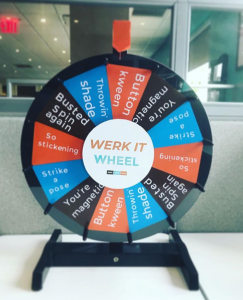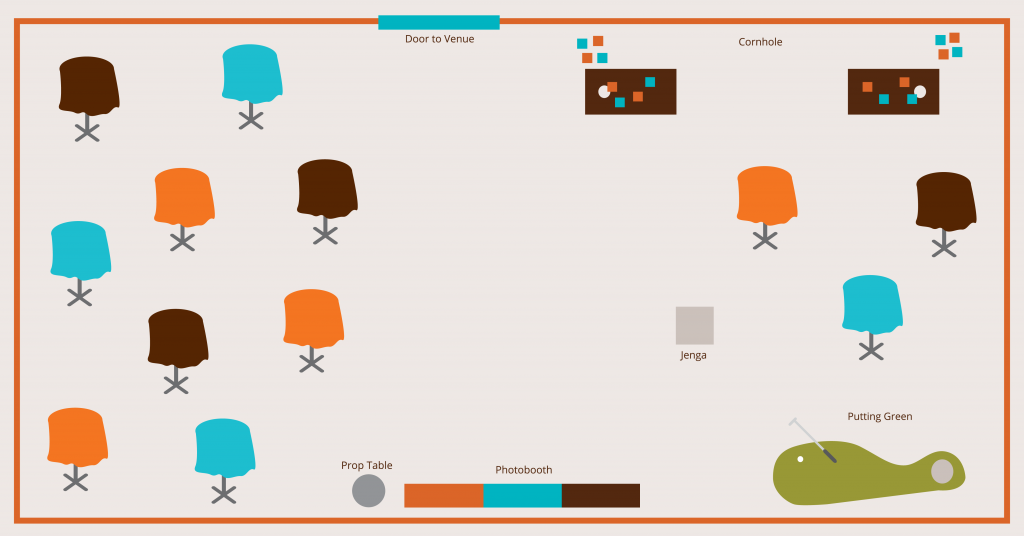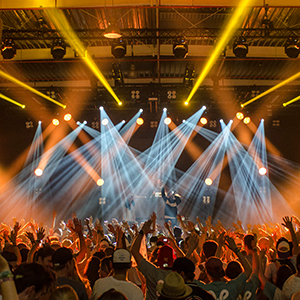
In just a matter of weeks, we’ve become accustomed to connecting screen-to-screen. Friends are hosting virtual happy hours. Late-night talk show hosts are cracking jokes from their kitchens. Kids are attending Frozen-themed birthday parties via video chat. When your fun is virtual, the wifi is the only limit.
If your current in-person events are on pause until we get the all-clear from authorities, here’s a six-pack of power questions to get you on your way to your first online event.
1. What type of online event is right for me?
Online events come in different flavors. The seemingly endless possibilities for customization can be overwhelming. Luckily, if you were hosting in-person events previously, you don’t have to start from square one; most events can be moved online with a little bit of creativity.
Think about why your audience attends your events in the first place. Is it for entertainment? Education? Social connection? Now, how can you deliver that value virtually?
Live performances can be streamed to an online audience. You may have to perform from your living room instead of your usual venue, but you won’t be alone.
Workshops and classes can go virtual with simple online meeting software, making it easy for everyone to learn and collaborate from the comfort of their own homes.
Films and other pre-made content can be made available for a limited time so your audience feels like they’re attending an event, rather than just paying for Netflix.
2. Should I go live or pre-record?
Depending on the type of event you’re hosting and your resources, you can choose to do the event live, pre-recorded, or both.
Going live will most closely mimic the feel of an in-person event. Your audience will get to watch the action unfold before their eyes and interact with each other and with you, depending on the platform you choose. Live events have a sense of immediacy and excitement—you never know what’s going to happen next.
Pre-recorded content can be great if you have a busy schedule, are hesitant to go live, or if audience interaction isn’t a big factor. Recording ahead of time also allows you to perfect the event by doing multiple takes (be sure to factor editing time into your planning).
For a bonus, record your live event. You can then rebroadcast it or make copies available for your audience so they can relive the experience whenever they want.
3. How will my virtual attendees participate in the event?
One thing that can be difficult to translate from in-person to online is audience participation. Performers feed off a crowd’s energy. Panelists take questions to spark further discussion.
While the energy of a live audience won’t be felt the same way for virtual events, there are multiple options for fostering audience participation that can be just as effective.
Live verbal participation (aka talking) – This type of participation is best for small groups, like classes or workshops, where the audience will benefit from interacting with one another. You’ll want to make sure everyone has the right audio equipment (earbuds with a built-in mic work perfectly).
Pro Tip: Ask attendees to mute their mics when they aren’t speaking to avoid background noise.
Live comments – Live commenting is most popular for live streams with large audiences on platforms like Facebook, Instagram, or YouTube Live. Viewers can tune into the event, but don’t have to commit to active participation. Instead of applause and cheers, they’ll leave comments and emojis to show their appreciation.
External community forum – If your event has a loyal fanbase, you can create a community forum to foster conversation outside of the event. Create a Facebook group and invite people to come share their thoughts. Your fans will have the opportunity to connect, and you’ll have a ready-made platform for promoting your future events.
No audience participation – Sometimes, audience participation isn’t necessary. After the event, you can send a follow-up email to thank attendees.
4. How should I price my online event?
Pricing your online event can be intimidating. You know people will pay to experience the event in-person, but is it still worth as much when it’s online?
The short answer is yes.
The value of your event is not dependent on the location, but on the entertainment, education, or experience you’re providing. While live events can be dressed up with free food and Instagram-able décor, the true value of your event will shine online. Focus on this, and don’t be afraid to price your tickets to match.
When setting your prices, also consider your audience and overall goals. If you’re hosting an event for an already loyal fanbase, they’ll be happy to pay to attend. If you’re fairly new to the scene and want to expand your audience, consider a free event with opportunities for viewers to contribute (see how one Seattle musician did exactly this). Collect contributions through a platform like Brown Paper Tickets, and you’ll also collect valuable attendee email addresses to start building your list. If you’re not sure where to start, you can always try a sliding scale or pay-what-you-like model.
What video-hosting platform should I use?
There are a plethora of video-hosting platforms and the one you choose will depend on your answers to the questions above. There are two main types: social media-based and software-based. Below is a brief overview of each type with specific examples and guidelines for best use.
Social Media Platforms
Examples: Facebook, Instagram, Twitter, YouTube Live
Features:
• Typically free to use
• Ability to broadcast to an unlimited audience
• Viewers can join at their leisure
• Participation via comments and reactions
Best for: Free events, live streams
Not for: Paid events, private events, gated content
See our comparison of free live streaming services.
Software-Based Platforms
Examples: Zoom, Bluejeans, Livestream
Features:
• Typically generate a private event link
• Can be password-protected
• Ability for audience to speak to and see one another
• Collaboration tools
• Often have limited free services with paid subscription tiers that allow for more attendees and tools
Good for: Paid events, private events, social events
Not for: Unlimited attendees
6. How do I get the word out about my event?
There are so many online events happening right now that it can be hard for people to keep track of all of them. Just look at Facebook, Instagram, or your email inbox—there’s no lack of organizations and individuals asking you to tune in to their upcoming live stream.
Start by listing your event online ahead of time. This will create a single landing page for the event that’s easy for your audience to find and for Google to index. Your listing should convey the event’s who, what, when, and where. It should also allow attendees to register, purchase tickets, or make a contribution.
If you list your event with Brown Paper Tickets, we’ll handle your ticket sales and attendee registration. You’ll also gain access to our suite of event management tools, including page customization, real-time reporting, and live customer support for you and your buyers.
Once your event is listed, use all your available resources to get the word out. Send email blasts, post on social media, and look for fans in new places. Thanks to the internet, you now have the opportunity to reach a global audience.
Visit our help site for more event promotion tips.
Ready to get your online event up and running? See how Brown Paper Tickets can support you.
Event Tips >















 Arts
Arts Comedy
Comedy Event Tips
Event Tips Film
Film Food & Drink
Food & Drink Good Causes
Good Causes Music
Music News
News Radio
Radio Roller Derby
Roller Derby